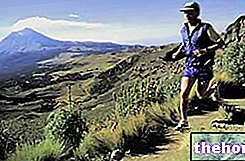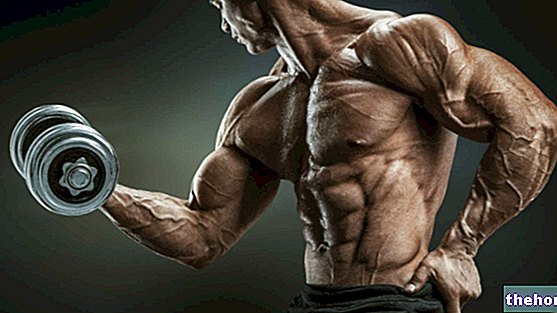Edited by Dr. Davide Traverso
Muscle pain
It is important to know and recognize the characteristics of post-training muscle pain, both to warn the client of the short-term effect of training, but above all to be able to interpret the signs of an injury.

- Muscle metabolism, especially anaerobic, lactic acid and aerobic, produces metabolic waste, just like the internal combustion engine burns gasoline and produces smog. This waste creates an acidic intra and extracellular environment, causing muscle pain through a system of chemical reactions. These pains, which we can define metabolic, are not particularly intense, occur 12-24 hours after training and have a limited duration.
- A particularly intense training (the intensity of the training is related to the state of form of the subject under examination) creates microtrauma to the muscle tissue (a laceration of the Z line is hypothesized). In this case the affected muscles are hard, swollen, sensitive to touch, painful in movement and unable to make great efforts. This type of pain is called myalgia; occurs 24-48 hours after the training session. Avoid training the same muscle intensely until the pain is almost completely gone. If myalgia is particularly important it should not be underestimated, as it can represent the preliminary stage of a strain or, even worse, a muscle tear.
- Finally we have DOMS (Delayed Onset Muscular Soreness), or delayed onset muscle soreness. They appear 48 hours after the training session, among the different theories the most accredited attributes the onset to the fact that the muscle fiber, during training, is subjected to a stretching to which it adapts by lengthening. The return to its original length creates pain even after training.
Whatever origin the post-training pains have, the methods to speed up recovery are the same: mild aerobic activity, stretching and possibly hot baths, hydromassage, massages.
We can prevent excessive muscle pain from exertion with a good periodization of the training, gradually increasing the loads and carrying out a good warm-up and recovery phase.
Before talking about the different activities, it is important to clarify which scientific principles the training is based on, whatever the trained skills are considered.
The training session produces organic stress and damage to tissues, muscles and tendons in particular. The most important phase is the recovery which, if sufficient, will allow us not only to repair the damage, but also to improve the structures, in order to raise our qualities.
This is valid for the improvement of all four pillars of fitness and represents the principle of SUPER COMPENSATION, on which all coaches are based to draw up their programs.
CREDITS:
Cross fitness training
How to structure a correct cross functional training program. For personal trainers, instructors, athletic trainers.
Davide Traverso
Alea Editions 2010 pag. 144 - Euro 21
Let's take the "great classics" of training: weight training, running, cycling and swimming. We integrate the various activities into a single articulated program, which stimulates all motor qualities, adding specific exercises taken from re-educational kinesiology, not only with a preventive function, but capable of giving the body a "harmony of forms and movements found only in athletes. level. We add a bit of variation and fun to the training, with some alternative proposals. These steps allow us to obtain a cross training program, called cross training, aimed at fitness and adaptable to any subject. Complete with tables and explanatory images of the proposed exercises.
www.professionefitness.com
Cross fitness training
Davide Traverso has a degree in Motor Sciences and obtained the title of Osteopath D.O. at the European Institute of Osteopathic Medicine. Specialized in body building, fitness and functional re-education, he has been a teacher of traditional massage courses and speaker in informative seminars on the applications of osteopathic medicine. He practices freelance as an osteopath and personal trainer in Genoa.
www.chinesiologiaglobale.it
Other articles on "Muscle Pain"
- Energy substrates
- Cross training, fitness and physical types



























